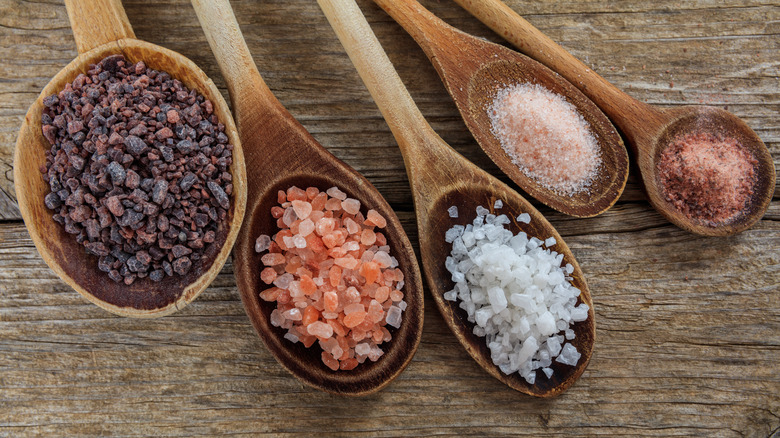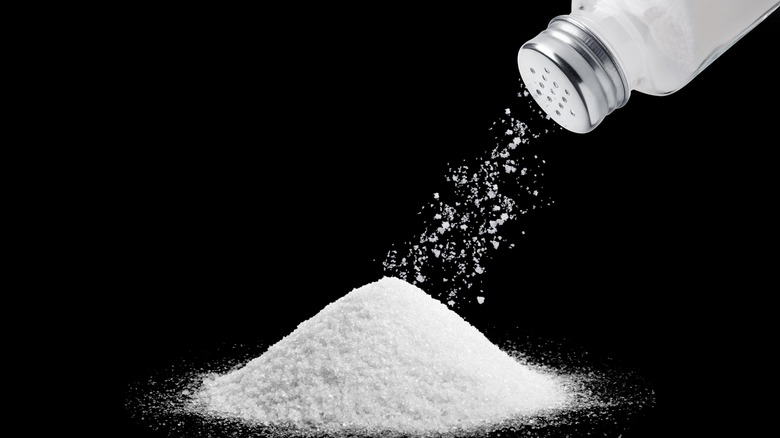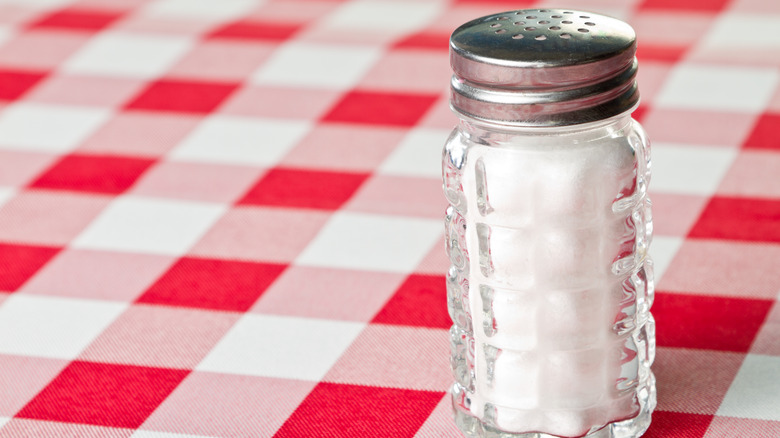Don't Stress About Finding The 'Healthiest' Salt. It Doesn't Exist
In the world of spices, salt is probably the most important and transformative. Salt has the magical ability to enhance and harmonize flavors. It heightens the natural sweetness of fruits, removes the bitter edge of certain vegetables, and intensifies the savory richness of meats. On top of all the ways it can improve the taste of a dish, salt is also a key component in food preservation. Additionally, salt contains sodium, which is necessary for our muscles and nervous system to function. But despite salt's many benefits, too much of it can be disastrous.
Too much salt in a recipe can make it inedible, and according to the CDC, too much sodium in our bodies can raise one's blood pressure to unhealthy levels, and increases the likelihood of experiencing heart disease or stroke. These negative aspects have led many people to seek out "healthier" varieties of salt with less sodium, like kosher and pink Himalayan salt. However, looking for the healthiest type of salt is nothing more than a wild goose chase. As it turns out, the sodium content of different salts is nearly identical.
There's no such thing as low-sodium salt
Different types of salt may have negligible amounts of different minerals like magnesium and potassium, but across the board, the sodium content of kosher, table, and sea salt is about the same — around 40%. The only difference is that individual salt crystals may be bigger or smaller, which can have an effect on the amount of sodium relative to the salt's weight, but not its volume.
As the American Heart Association (AHA) explains it, "a teaspoon of sea salt or kosher salt may have less sodium simply because fewer crystals fit on the spoon." Looking to research produced by Harvard's School of Public Health, we find that the amount of sodium in the same amount of different types of salt have more or less sodium depending on how finely it is ground. For example, a teaspoon of coarse sea salt has about 500 fewer milligrams of sodium than a teaspoon of fine sea salt. Similarly, a teaspoon of coarse kosher salt has 1,920 mg of sodium, while a teaspoon of fine kosher salt only has 1,120 mg. These discrepancies are because the amount of sodium in salt is being measured by volume. If it was being measured by weight, the numbers would all be about equal.
Nutritional implications
A survey conducted by the AHA found that 61% of people believe regular salt has more sodium than sea salt, which is incorrect. This is troublesome, because it may lead people to consume more salt than is healthy under this false assumption. The AHA advises that adults avoid eating over 1,500 milligrams of sodium a day. Excessive sodium can lead to health problems, but salt isn't a bad thing inherently. In fact, the AHS says that most of the sodium in the average American's diet doesn't even come from regular table salt. Instead, 75% of it comes from processed foods like canned food and prepackaged meals. Most fast food also contains an exorbitant amount of sodium.
It's in your best interest to limit your sodium consumption, but that doesn't mean you have to avoid salt entirely. Just pay attention to how much salt you use, and take notice of the nutritional information on the packaging of processed food to keep track of how much sodium you're ingesting. There is no "unhealthy" salt unless you eat too much. When used in moderation, any type of salt can be used to transform your food and bring out the most amazing flavors without being detrimental to your health.


